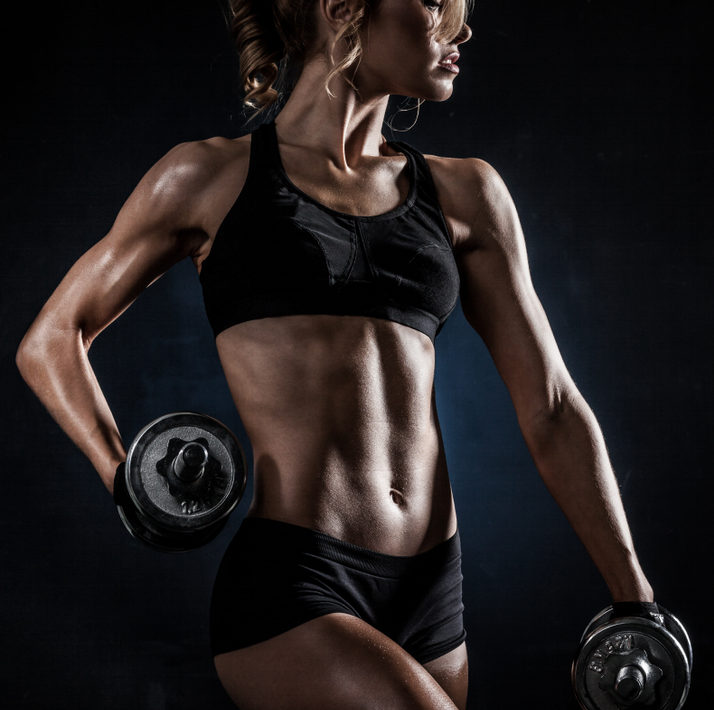Rucking: Why It’s a Great Workout & How to Get Started

Discover the benefits of this workout that combines walking with weighted resistance to improve strength, endurance, and calorie burn—all while being gentle on the joints
All products featured on Athletech News are independently selected by our editors. However, when you buy something through our retail links, we may earn an affiliate commission.
If you’re looking for a workout that’s easy to start, burns calories, and builds strength—all without needing a gym—it’s time to introduce you to rucking. Essentially, it’s walking with a weighted backpack, and while that might sound simple, it’s incredibly effective. Rucking combines the benefits of cardio and resistance training in one low-impact activity that anyone can do, whether you’re a fitness newbie or a seasoned pro. Here’s everything you need to know about why rucking is worth a try, along with some tips and gear essentials to get started.
What Is Rucking?
Rucking, at its core, involves walking with a weighted backpack or rucksack. Originating from military training, rucking is both simple and effective, making it accessible for anyone who wants to add intensity to their usual walking routine. The weight provides resistance, engaging more muscle groups and adding a cardio component to what might otherwise be a leisurely activity.
Why Rucking Is a Great Workout
1. Full-Body Workout
Rucking works out more than just your legs. The added weight engages your shoulders, back, core, and glutes, turning a simple walk into a full-body exercise. By carrying weight, you’re challenging your muscles to stabilize and support your body, leading to strength gains across multiple muscle groups.
2. Low-Impact Cardio and Strength
Unlike running or high-intensity interval training (HIIT), rucking is low-impact, making it gentle on the joints. This makes it ideal for individuals who want a solid cardio workout without the risk of strain or injury from high-impact exercises. The weight adds intensity without requiring fast movements, providing both a cardio and strength workout that’s accessible and safe.
3. Improves Posture and Core Stability
With proper form, rucking encourages a strong posture and helps engage the core. Carrying weight on your back requires your core muscles to stabilize and balance the load, leading to better posture over time. As you strengthen these muscles, you may also see improvements in balance and body alignment.
4. Efficient Calorie Burner
The added weight in rucking increases calorie expenditure, helping with weight management. Walking with extra weight can burn up to 40-50% more calories compared to regular walking, depending on your pace and load. This makes rucking an effective workout for anyone looking to increase their activity level and burn calories without intense workouts.
Getting Started with Rucking: Tips for Beginners
1. Start Light and Gradually Increase Weight
When starting out, begin with a lighter weight (around 10% of your body weight) and gradually increase it as you get more comfortable. It’s better to go lighter at first to avoid straining your back or joints.
2. Focus on Posture
Good posture is essential when rucking. Keep your shoulders back, engage your core, and avoid slouching under the weight. Maintaining a steady, upright posture reduces the risk of back or shoulder discomfort and ensures you’re getting the most out of your workout.
3. Plan Your Route and Distance
As a beginner, aim for shorter distances (1-2 miles) and increase as your stamina builds. Choose a comfortable walking route, and remember that hills or inclines can add an extra challenge. Over time, you can add more distance, weight, or incline to keep pushing your limits.
4. Wear Comfortable Gear
Invest in a comfortable, well-fitted backpack and supportive walking shoes. Your gear can make or break your rucking experience, so prioritize equipment that provides good weight distribution, reduces strain, and keeps you comfortable throughout your workout.
Rucking Gear Essentials: What You Need to Get Started
Ready to try rucking? Here’s a shopping guide with must-have items to make your rucking experience comfortable and effective.
-
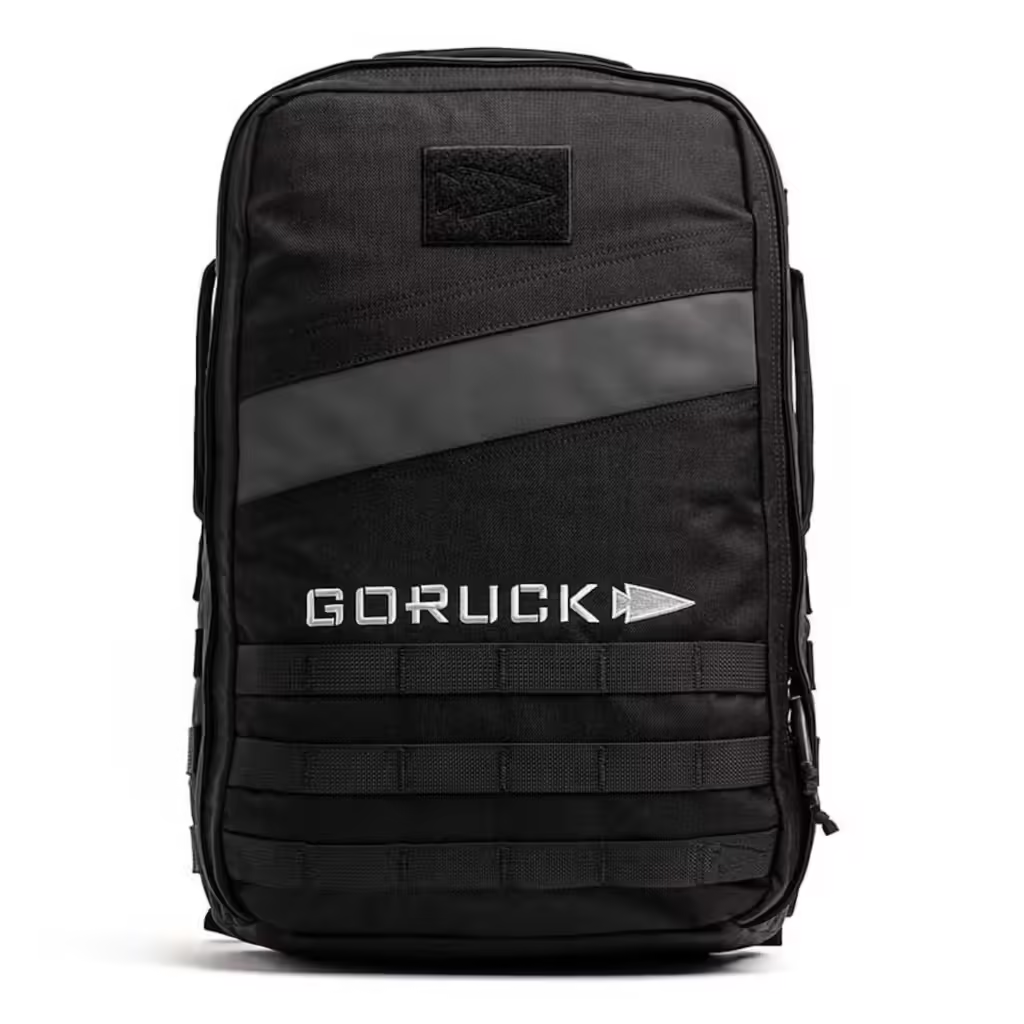
Weighted Backpack or Rucksack
A durable, adjustable backpack is essential. Look for one with padded shoulder straps and a sturdy hip belt to help distribute weight evenly. Some popular rucking brands offer backpacks specifically designed for carrying weights, but a well-constructed hiking backpack can also work.
Buy Now: GoRUCK Rucker 4.0 Backpack, $255 at Huckberry
-
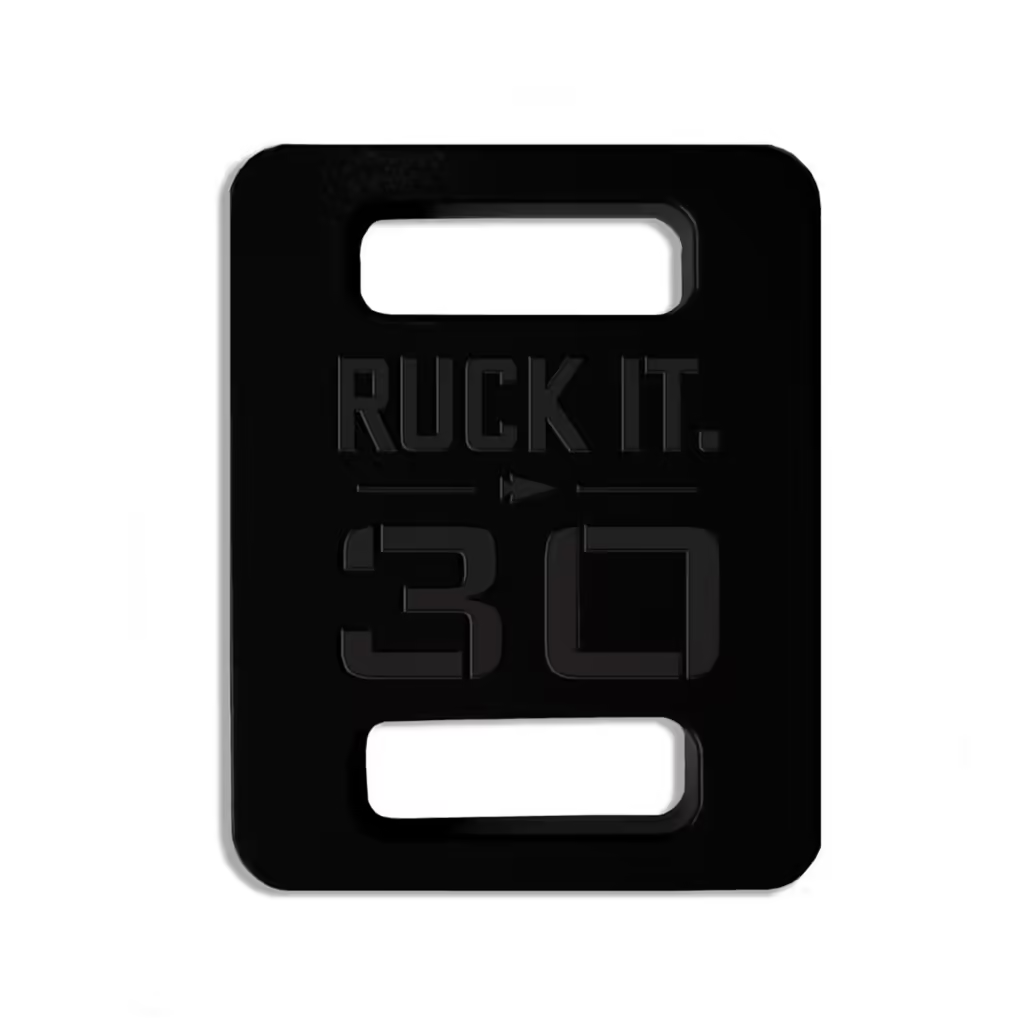
Weight Plates
To increase resistance, you can use weight plates or weighted sandbags. Opt for a set that fits comfortably in your backpack, and start with a lighter weight (10-15 lbs) if you’re new to trucking.
Buy Now: GoRUCK Ruck Plate, $120 at Huckberry
-

Supportive Walking Shoes
Comfortable, supportive shoes are key to preventing strain and maintaining good form. Look for shoes with good arch support and cushioning to handle the extra weight, especially if you plan to ruck on varied terrain.
Buy Now: Hoka Bondi 8, $132 at Hoka
-
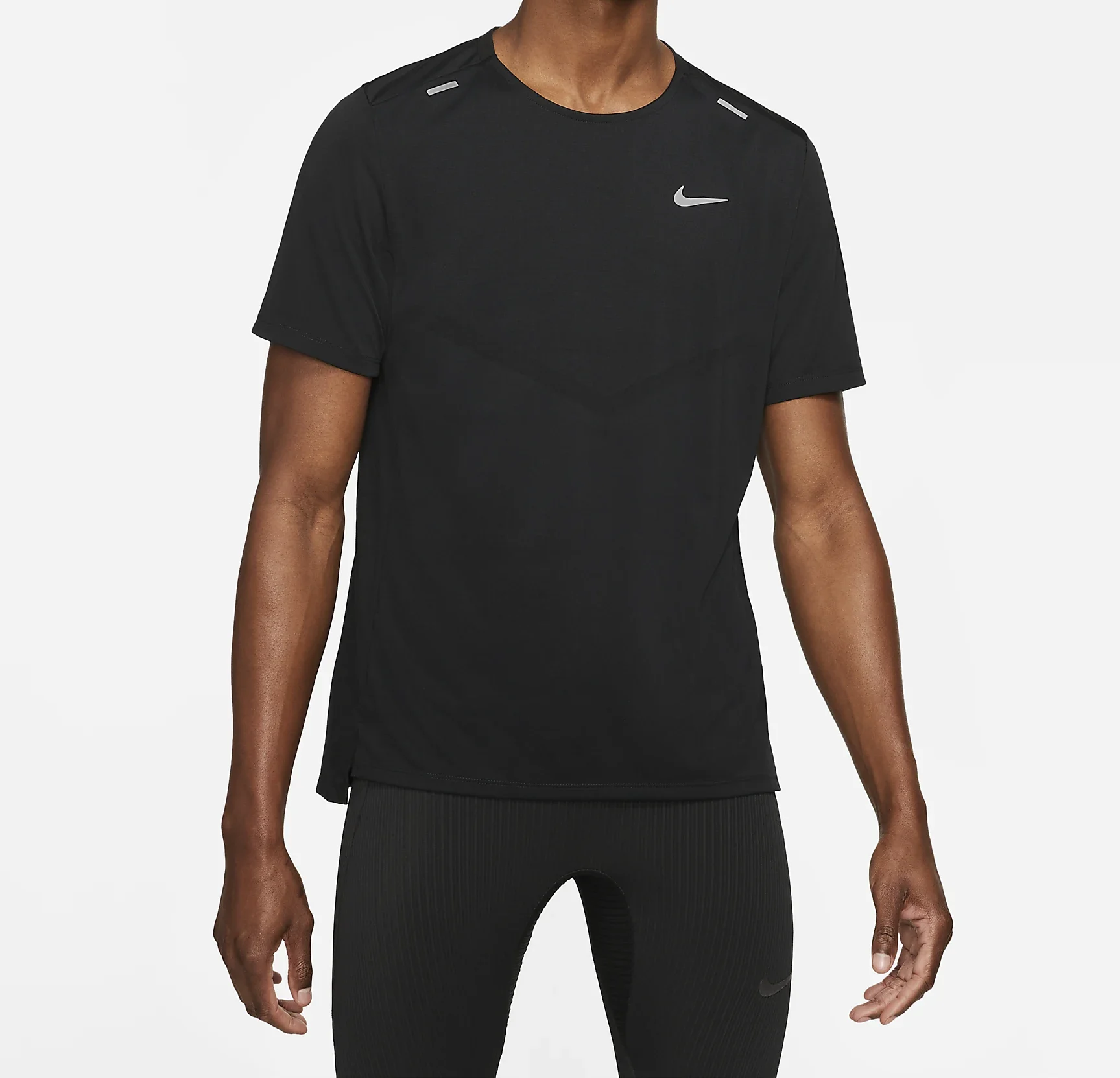
Moisture-Wicking Apparel
Rucking can be intense, so wear moisture-wicking clothes that help regulate body temperature and reduce chafing. Lightweight, breathable fabrics will keep you comfortable, even on longer rucks.
-
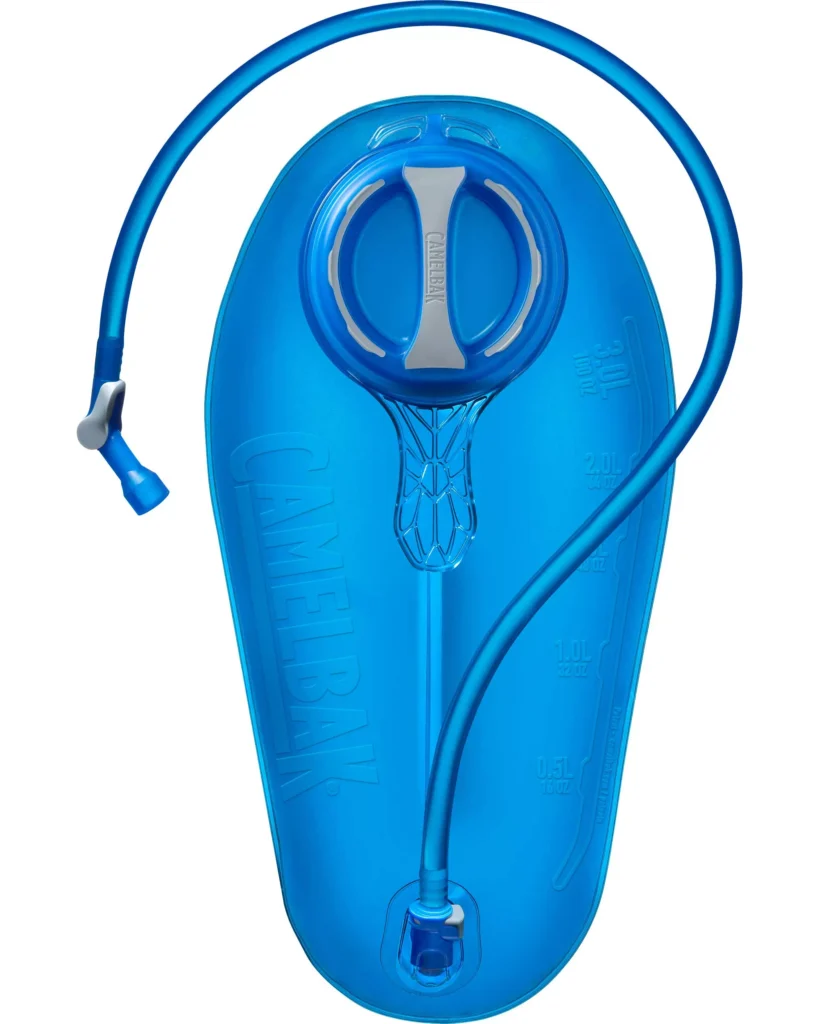
Hydration Pack or Water Bottle
Staying hydrated is essential for any workout, especially when adding weight. A hydration pack in your backpack can keep you hands-free while you walk, or opt for a refillable water bottle.
Buy Now: CamelBak Crux Reservoir, $40 at Dick’s Sporting Goods
-
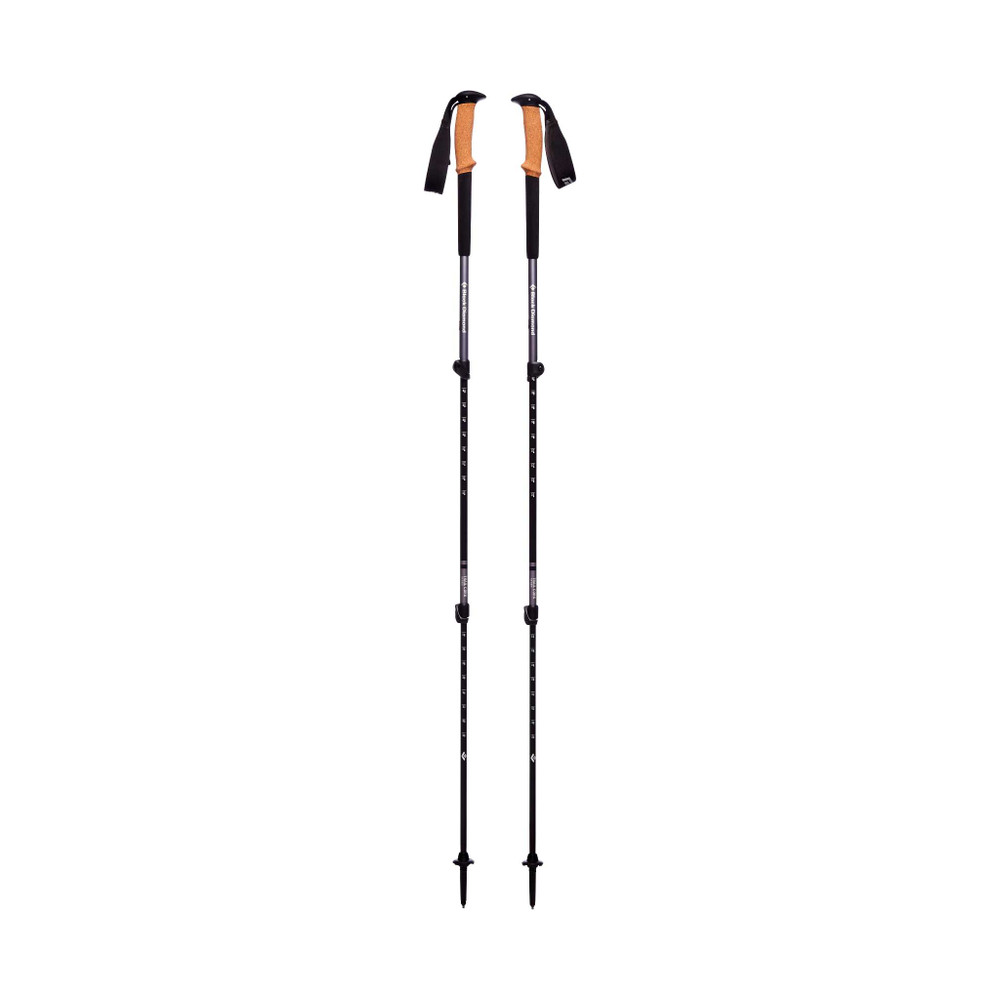
Optional: Trekking Poles
For those rucking on uneven terrain or hiking trails, trekking poles can provide additional stability and reduce strain on the knees. They’re especially useful if you’re carrying a heavier load or walking steep inclines.
Buy Now: Trail Cork Trekking Poles, $130 at Black Diamond Equipment



